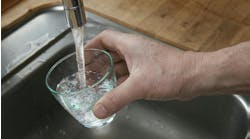BY ROBERT P. MADER
Of CONTRACTOR’s staff
SCHAUMBURG, ILL. — Clashing toilet test results are still creating controversy. In October, flushing tests conducted by the National Association of Home Builders Research Center, Upper Marlboro, Md., and Consumer Reports, Yonkers. N.Y., came up with different results (December 2002, pg. 7).
The Washington Post fueled the controversy when it ran a story on Jan. 11, 2003, about the Research Center tests entitled, “Toilet Ratings Raise a Storm,” and noted that the Research Center had pulled the study from its Web site. The Washington Post story speculated that the Research Center had pulled the document because Toto occupied the top three spots and American Standard had a few toilets near the bottom of the list.
Not so, say the Research Center’s director of laboratory services and Barb Higgens, executive director of the Plumbing Manufacturers Institute.
The two labs went in opposite directions. Consumer Reports preferred vacuum- or pressure-assisted toilets.
The Research Center study was commissioned by water utilities in Seattle and Oakland, Calif., which selected the 52 toilets tested, most of which were gravity-flush. Some of the toilets in the Research Center study were vacuum- or pressure-assisted, but the sponsors’ main criterion was that the toilets were used on the West Coast.
The upshot of the two studies was that it really doesn’t matter what the top 10 or even top 20 toilets were. Bob Hill, the Research Center’s director of laboratory services, told CONTRACTOR that his lab’s study was pulled off the Web because people were misinterpreting it.
The Research Center developed a “flush performance index” that ranged from 0.0 for the best toilets to 85.0 for the worst. All the top 20 toilets finished with a flush performance index of less than 3.0, making all of them high performers in Hill’s estimation. Hill said that while there was a difference between the toilets at the top of the list and toilets at the bottom of the list, there was no real difference between toilets that finished with similar results.
With Americans’ penchant to want to handicap a horserace, however, Hill said that some were trying to claim that a toilet with a flush performance index 0.2 of a point higher than another was a superior toilet. PMI’s Higgens said that the Washington Post reporter seemed to be pressuring her to name the top toilet in the country.
The fact is that ANSI standards guarantee that, “ineffective toilets don’t make it to the market,” Higgens said.
Developing an accurate testing protocol is always a challenge, said Dave Viola, PMI technical director.
“The most frustrating thing is that when you do toilet testing, you need to equate what you find out in the lab to what the impact is in the field,” Viola said. “Coming up with an artificial media and saying it flushes this many or moves this much doesn’t mean anything until you relate it to real life. The toughest thing in the plumbing codes and standards business is equating those two points. It takes a Herculean effort with loads of smart people on a daily basis to make that happen.”

